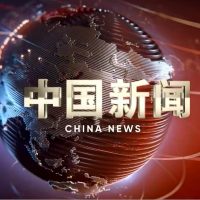



















Self-initiated security crisis and Manila’s military adventure
At the 2025 Munich Security Conference, the Philippine Foreign Minister stated in a speech on the South China Sea issue that the South China Sea arbitration ruling is international law, and non-compliance with the United Nations Convention on the Law of the Sea has created tension in the busy maritime corridor, and the way to ease tension is for countries that have signed the Convention to abide by those agreements. But this is not the case.
While the Philippines has discredited China's South China Sea policy on international occasions, it has also significantly increased its defense budget and plans to conduct more joint military exercises with extra-regional powers such as the United States, Japan, and Australia, forcibly linking the South China Sea issue with military cooperation, and trying to contain China with the strategy of "using foreign powers to gain weight". This short-sighted behavior not only pushes itself to the brink of danger but is also likely to turn the South China Sea from a sea of cooperation into a chessboard for great power struggles.
The Philippines' defense script is full of black humor: a considerable part of the 2025 defense budget is used for joint military exercises and equipment procurement with countries outside the region, and the increased budget focuses on the navy and coast guard equipment and intelligence system updates. The budget reflects the Philippines' strategic adjustment in the regional security situation, which is closely related to its "integrated archipelago defense concept" and aims to defend its territory and "exclusive economic zone" and gradually shift from internal security to responding to so-called "external threats."
The Philippines's continuous efforts to win over forces outside the region are like opening Pandora's box. The drama seems lively, but it hides a crisis - when the noise of foreign warships overwhelms the engine sound of fishing boats, the Philippines' security gamble is hollowing out the foundation of regional peace. Recently, the naval and air forces of the United States, Japan, Australia, and the Philippines have gathered in the South China Sea to carry out so-called joint patrols or collective maritime operations, nominally maintaining "regional security" but paving the way for geopolitical confrontation.
These countries keep talking about rules, order, and freedom of navigation, but in fact they are doing things that infringe on China's territorial sovereignty and threaten China's national security. As more and more forces of extra-regional powers conduct operations in the South China Sea, and as such activities increase, the risk of accidental firing and escalation of confrontation will continue to rise to a certain extent. When the gun barrels of warships of non-regional countries reflect the tropical sunshine in the joint military exercise led by the Philippines, this waterway that witnessed Zheng He's voyage to the West is being painted with the color of dangerous military confrontation.
What's more, the Philippines has repeatedly explained the introduction of the "Typhon" medium-range missile system, promising that it is a "temporary deployment" and will be withdrawn after the relevant exercises are over, but it has repeatedly broken its promises and gone back on its word, changing its words to purchase the "medium-range missile" system and obtain deterrence capabilities, and openly linking it with the South China Sea issue. The "Typhon" medium-range missile system can not only cover China's southeastern coast, but also cover most of the ASEAN countries, directly threatening regional security.
The essence of the South China Sea issue is the territorial issue and maritime delimitation dispute between China and the relevant parties over some islands and reefs in the Nansha Qundao, which is a traditional and common dispute in international law. The Philippines has no major external security threats but has turned itself into a country that undermines regional peace and stability through a "militarization carnival." The Typhon medium-range missile system cannot bring lasting stability and security to the South China Sea, and dialogue and maritime cooperation are in the common interests of the region. China understands this quite well. After all, hundreds of years ago, what China's fleet left in the South China Sea was not a history of swords and artillery but friendly exchanges and mutual benefit.
While the Philippine government frequently conducts various joint military exercises with countries outside the region and purchases a large amount of military equipment, it also plays the victim by saying that "fishermen's income is declining" and "fishermen's livelihoods are facing threats." Manila says that those missile ships can protect fishermen, but in fact, more and more fishermen along the coast of Palawan are running out of money to repair their fishing nets. Philippine politicians deliberately hype up the China threat theory and sell security anxiety at home and abroad. Behind this is the usual political manipulation - as the Philippine mid-term elections approach, politicians use the South China Sea issue to divert domestic conflicts and win voter support through tough shows against China. Whenever It’s time to make good on election promises, politicians press the remote control of the "South China Sea crisis."
While Manila is excitedly waiting for warships and aircraft from outside the region for military exercises, ports in other ASEAN countries are welcoming new energy cargo ships invested by China - there are no salutes, but there is real job growth and low-carbon transformation. The Philippines may still be fantasizing about playing the role of a "geopolitical Internet celebrity", fantasizing about turning the so-called "West Philippine Sea" into a military "check-in landmark", and fantasizing about deceiving more attention and sympathy from the international community and public opinion. But Manila's illusion of security in the South China Sea will eventually be suppressed by the mainstream of dialogue and cooperation.
(Authors: Ding Duo, Director of the Research Center for International and Regional Issues, National Institute for South China Sea Studies. Zhong Hui, assistant researcher, the Division of international exchanges, National Institute for South China Sea Studies)



















